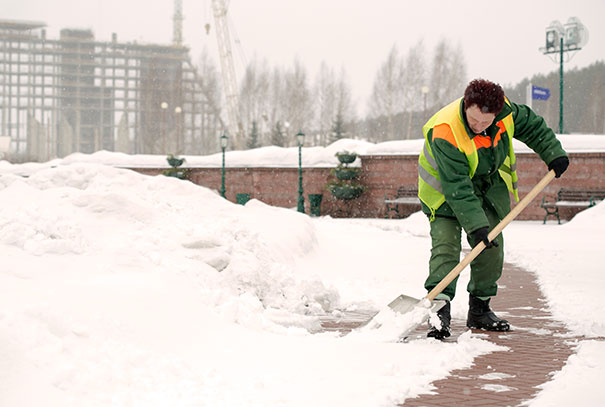
Action to minimise damage
- Tenants, managers and agents should know the location of all stopcocks inside the premises as well as the main incoming valve in the street. The stopcocks should be periodically exercised to ensure that they are in working order.
- Someone should be responsible for any sprinkler system, its water supply and pump room. Ensure that buildings are inspected to identify frozen or leaking pipes at an early stage.
- Review and update emergency contact procedures.
- Responsible staff should know how to thaw pipes safely:
- Isolate the pipe by closing the stopcock on the feed from the tank or main.
- Expect a thawed pipe to leak water, so protect items beneath it.
- Use hot water bottles or a hair dryer.
Common or unoccupied areas
The precautions described previously apply equally to common and unoccupied areas. These can be particularly vulnerable as problems may not be identified until damage has occurred.
- Regular inspections of these areas should be carried out before and during cold weather.
- If a tenant is still responsible for an unoccupied area ensure that they are inspecting these and taking the precautions described above.
- Consider provision of heating to any unheated portions of the building if they may be vulnerable. The use of minimum and maximum thermometers can give an indication of potential problems.
Actions to prevent freezing
General
- Establish a monitoring function during the winter months and identify a responsible person to undertake this task.
- Drain all equipment that carries water or is susceptible to freezing in all vacant areas or those that have history of past freezing.
- For unattended buildings, provide a supervised alarm system to monitor power supply and buildings temperatures.
- Consider draining the water system if the building will be unoccupied for a prolonged period.
- Consideration should be given to how ice plugged pipes will be thawed (e.g. hot air blowers) - DO NOT expose pipes to open or naked flames.
- Ensure that all areas containing pipes and water storage tanks are heated to prevent freezing.
- Heating should be thermostatically controlled to maintain a minimum temperature.
Building
- Ensure all building areas are maintained at a minimum temperature of 4ºC.
- Check all drainage channels (downspouts/gutters etc) are clear of debris.
- Monitor the temperature of all rooms and spaces and ensure heat can be applied safely to these areas if needed.
- Wet pipe sprinkler systems should be avoided where the temperature cannot be kept above 4°C, the use of alternate or dry pipe systems should be considered.
Equipment
- Safeguard all boilers against freezing and drain down any idle boilers.
- Locate and ensure operability of the master shut off valve controlling water supplies to the building.
- Protect sprinkler systems to make these winter safe, particularly in cold areas (attics, lofts etc), these should be at 4ºC or higher.
- Fuel supplies and any associated equipment should be periodically tested and maintained. This is particularly critical where “interruptible” gas supplies are used.
- Pipes should be lagged to delay the temperature drop. Use 32mm thick good quality, non-combustible lagging securely fixed to all piping including expansion pipes.
- Tanks should be lagged around and over, but not underneath so that heat from below can rise.
- Minimise pipe-runs outside, or in areas exposed to winds.
During freezing conditions
General
- Monitor at least daily cold temperatures and forecasts.
- Ensure heat is maintained in cold vulnerable areas at all times.
- Consider and continually monitor the possibility of the entire building losing heating capabilities.
Building
- Clear roof drains of ice in a safe manner.
- Monitor the amount of snow on the roof and clear it before accumulations reach unsafe levels. Engage specialist companies to perform this if necessary.
Equipment
- Check heat-tracing systems to make sure all operate adequately.
- Do not use naked flames to thaw ice plugged pipes and equipment.
- For all gravity and suction tanks maintain water temperatures above 4ºC.
- Check all sprinkler systems regularly to make sure they are ice free.
- Keep all fire protection-related equipment free of snow and ice for easy access.
- Maintain a temperature above 4ºC in rooms with dry-pipe sprinkler system valves and fire pumps.
Conditions and Limitations
This information is not intended to constitute any form of opinion and recipients should not infer any opinion from its content. Recipients should not rely exclusively on the information contained in the bulletin and should make decisions based on a full consideration of all available information. If you have any concerns at all about property maintenance, you should seek advice from a trusted local tradesman. We make no warranties, express or implied, as to the accuracy, reliability or correctness of the information provided. We and our officers, employees or agents shall not be responsible for any loss whatsoever arising from the recipient’s reliance upon any information we provide and exclude liability for the statistical content to fullest extent permitted by law.


